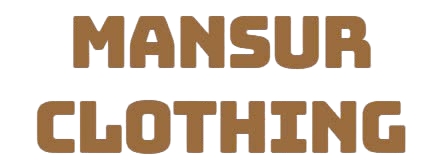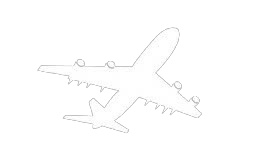Leather jackets have long transcended their role as simple functional garments, evolving into enduring symbols of rebellion, adventure, and timeless style. Their story is not merely one of fabric and design, but a rich tapestry interwoven with military history, cultural revolutions, and the ever-changing world of fashion. The biography of leather jackets is a narrative of transformation—from practical workwear to an emblem of counterculture, from the battlefields and airfields of war to the runways and silver screens of modern society.
The origins of leather apparel stretch back to ancient times, when early humans discovered the durability and versatility of animal hides. Initially used for protection against harsh climates and rugged environments, leather gradually became a staple material for survival. However, it was not until the early 20th century that the modern leather jacket began to take shape. Inspired by the need for robust and protective gear, early designs were born out of necessity. During World War I, leather jackets were adopted by military personnel for their resilience and ability to shield soldiers from wind and cold. These early jackets were utilitarian in nature, designed primarily for function over form, yet they set the stage for what would eventually become a cultural icon.
Following the devastating impact of World War I, advancements in technology and a renewed focus on practicality led to innovations in leather manufacturing and garment construction. By the time World War II erupted, leather jackets had evolved into a critical component of military attire. Pilots in the fighter squadrons of World War II, for instance, were provided with leather flight jackets that offered both insulation and protection. These jackets, often lined with shearling or quilted fabric, were instrumental in keeping aviators warm at high altitudes, where temperatures could plummet dramatically. The association of leather jackets with courage and resilience was solidified during this period, as they became synonymous with the daring exploits of those who risked their lives in the skies.
After the war, as society began to rebuild and redefine itself, the leather jacket took on new meanings. No longer confined to the battlefields, these garments began to symbolize freedom and rebellion. In the 1950s, a period marked by post-war prosperity and cultural shifts, Hollywood played a pivotal role in transforming the leather jacket into a statement of individualism. Films such as “The Wild One” and “Rebel Without a Cause” catapulted icons like Marlon Brando and James Dean to stardom, with their rugged, unrefined leather jackets becoming a visual shorthand for defiance. For a generation disillusioned by conformity, the leather jacket was a bold declaration of nonconformity and a rejection of societal expectations.
As rock and roll exploded onto the scene in the 1960s and 1970s, the leather jacket became further entrenched as a symbol of counterculture. Musicians and fans alike adopted the garment as a badge of honor—a marker of an edgy, rebellious lifestyle that celebrated individuality and self-expression. Rock stars such as Steve McQueen and later punk icons donned leather jackets, turning them into versatile canvases for personal style. Subcultures began to reinterpret the classic design, adding patches, studs, and other embellishments that transformed each jacket into a unique piece of art. The leather jacket was no longer just a piece of clothing; it was a narrative, a conversation starter, and a repository of personal stories and experiences.
The evolution of leather jackets is also a story of constant reinvention in the face of changing fashion trends and technological advancements. In the early days, the focus was on durability and functionality, with simple designs that prioritized warmth and protection. Over time, as the cultural significance of leather jackets grew, so did the intricacy of their designs. Designers began to experiment with different cuts, finishes, and details, resulting in a diverse array of styles. The sleek, form-fitting silhouette of the motorcycle jacket emerged as a popular variant, celebrated for its blend of ruggedness and sophistication. Meanwhile, bomber jackets—with their distinctive collars, cuffs, and hem—became emblematic of military precision and casual cool. Each design iteration brought with it a new layer of meaning, reflecting the values and aspirations of its era.
Cultural symbolism has always played a central role in the life story of leather jackets. They have served as markers of social status, political statements, and even rites of passage. In the turbulent decades of the 1960s and 1970s, leather jackets were adopted by various subcultures as a symbol of rebellion against established norms. In urban environments, they were embraced by the burgeoning punk movement, becoming synonymous with anti-establishment attitudes and raw, unfiltered expression. Simultaneously, in more mainstream contexts, leather jackets retained their association with cool defiance, representing an allure that was as much about attitude as it was about aesthetics. The very texture and patina of leather came to symbolize lived experience—the scars, wear, and impermanence that only added to its charm. With each scratch and crease, the jacket seemed to tell a story of adventures past, embodying a spirit that refused to be tamed by time.
In parallel with cultural shifts, the craftsmanship behind leather jackets also experienced significant transformation. Traditional methods of leatherworking, passed down through generations, were augmented by modern techniques that allowed for greater precision and creativity. Hand-stitching, once the norm, gradually gave way to specialized machinery that could handle the unique demands of leather. Yet, despite technological progress, many artisans continued to honor age-old techniques, believing that true quality lay in the human touch. This delicate balance between tradition and innovation is at the heart of leather jacket making—a craft that marries time-honored skills with contemporary design sensibilities. Today, bespoke leather jackets continue to be a testament to this fusion, celebrated as wearable art that honors its storied past while embracing the future.
The influence of leather jackets extends far beyond the realm of fashion. They have permeated various aspects of popular culture, from music and film to literature and art. The image of a lone rider cruising down an open highway, clad in a weathered leather jacket, has become an archetype—a symbol of freedom, rebellion, and the relentless pursuit of adventure. In cinema, directors often use the leather jacket as a visual shorthand to convey a character’s inner strength, defiance, or mysterious allure. Similarly, in literature, the leather jacket is frequently invoked as a metaphor for resilience and individuality, representing a barrier against the conformity of everyday life. It is this multidimensional significance that has cemented the leather jacket’s place in the collective imagination, making it an enduring icon that transcends time and trends.
As we move into the modern era, the legacy of the leather jacket continues to evolve in exciting ways. Contemporary designers are reinterpreting classic forms with fresh perspectives, incorporating sustainable practices and innovative materials to address the challenges of a rapidly changing world. The push towards eco-friendly production methods and ethical sourcing of leather is reshaping the industry, inviting a new generation of consumers to appreciate the craftsmanship and heritage of leather jackets without compromising on environmental values. At the same time, technology has enabled the creation of hybrid designs that blend traditional aesthetics with modern functionality—jackets that incorporate smart textiles, weather-resistant coatings, and modular elements. These innovations ensure that the leather jacket remains relevant in an era where style and substance must coexist harmoniously.
The enduring appeal of leather jackets can also be attributed to their ability to adapt to the diverse tastes and lifestyles of wearers around the globe. Whether paired with a casual pair of jeans for a relaxed weekend look or layered over a tailored suit to add an edge of rebellious sophistication, the leather jacket is remarkably versatile. Its universal allure lies in its ability to complement a wide range of aesthetics, from rugged and utilitarian to sleek and contemporary. For many, wearing a leather jacket is not just about making a fashion statement; it is about embracing a mindset—one that values authenticity, resilience, and the courage to stand apart from the crowd.
Looking back on the biography of leather jackets, one cannot help but be struck by the profound impact they have had on both personal style and broader cultural narratives. From their humble origins as practical garments designed to withstand the rigors of battle and flight, to their rise as symbols of counterculture and artistic expression, leather jackets have continually reinvented themselves. They are living artifacts of history, each piece carrying within its worn edges and distinctive patina the echoes of countless stories, struggles, and triumphs. As trends come and go, the leather jacket remains a steadfast reminder that true style is timeless—a quality forged in the fires of experience and tempered by the passage of time.
In many ways, the story of the leather jacket is a microcosm of human creativity and resilience. It is a testament to our ability to transform raw, natural materials into objects of beauty and meaning, and to imbue those objects with layers of personal and cultural significance. Each jacket is more than just a piece of clothing; it is a repository of memories, a canvas for self-expression, and a tangible link to the past. Whether passed down through generations or reinvented with contemporary flair, the leather jacket continues to serve as an enduring symbol of our shared human experience—a narrative of transformation, defiance, and enduring style.
As we look to the future, the biography of leather jackets remains an open book, inviting new chapters written by innovative designers, passionate artisans, and discerning wearers. The evolution of the leather jacket is far from over; it is a dynamic and ongoing story that adapts to the shifting currents of society, technology, and art. With each new design and every fresh reinterpretation, the legacy of the leather jacket is reaffirmed—its past intertwined with the present, and its future as boundless as the spirit of those who choose to wear it.
In essence, the leather jacket is much more than a garment—it is an icon, a symbol, and a living testament to the power of creativity. Its biography is etched in every stitch, every crease, and every mark of wear that tells a tale of adventure, rebellion, and the relentless pursuit of individuality. From the trenches of war to the glamour of the silver screen, from the roaring engines of motorcycles to the intimate corridors of personal expression, the leather jacket stands as a tribute to the enduring human spirit. And as long as there are those who dare to challenge the status quo and seek a life less ordinary, the story of the leather jacket will continue to be written, one daring adventure at a time.

